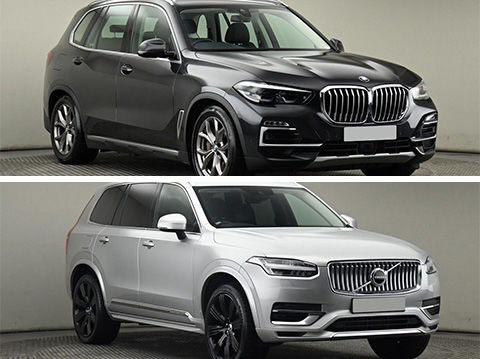Guide To Modern Driving Assists

Autonomous Emergency Braking
AEB, or Autonomous Emergency Braking, isn’t a new technology, but it is becoming a standard inclusion for many car makers. It is though the 1959 Cadillac Cyclone concept vehicle was the first to attempt a collision-avoidance system, however, at the time, it was deemed uneconomical.
Using radar, cameras or beams of light, AEB detects upcoming obstacles and alerts the driver - if it is deemed to be a danger. If the motorist takes no action, the vehicle intervenes, applying the brakes automatically to either totally avoid the hazard, or reduce the severity of the crash. Some systems may also be able to take evasive action by steering.
The best assists are capable of recognising not only cars but also vulnerable road users, such as pedestrians and cyclists.
In 2018, a Thatcham research study declared AEB as likely “the most important development” in vehicle safety since the introduction of the seat belt. Up to 1,100 lives are predicted to be saved over the next decade thanks to AEB alone.
AEB may go by other designations, like collision avoidance, pre-crash assist, forward collision warning or collision mitigation - as well as several manufacturer-specific names like Audi’s Pre-sense, City Safety (Volvo) or PRE-SAFE at Mercedes.
Adaptive Cruise Control
By using onboard radar or LIDAR sensors, equipped cars are able to react to vehicles ahead and maintain a safe distance, while having a set speed to try and maintain. Adaptive cruise can contribute to reducing driver fatigue. Some systems are capable of going from motorway speeds to stop and start traffic, and back again.
Blind Spot Warning
By constantly monitoring data from sensors around the body, the on-board control module will alert drivers to obstacles out of their vision, hidden in blind spots. The system may produce audible alerts or even graphical representations of the other vehicle on the dash. Some systems are capable of overriding the driver’s input if it would result in contacting the out of sight road user.
Lane Keep Assist
Lane Keep Assist relies on cameras to detect the road markings, aiding in centring the vehicle in the lane. It can help prevent accidents where a driver drifts off course through inattention or fatigue. Many liken it to having someone looking over you at all times.
Eventually, Lane Keep Assist and other technologies will form the foundation of self-driving or autonomous cars.
Driver Monitoring
Some automotive manufacturers are deploying cameras and sensors that can assess how alert the driver is. The car will sound audio alerts if the driver’s inputs are becoming sloppy, if their lane position seems off or if their head begins to nod from tiredness. A few manufacturers have implemented a graphic that advises the driver to stop and take a rest.
These systems go by a multitude of monikers, such as driver drowsiness detection, fatigue detection, driver alertness monitoring and brand names like rest recommendation or attention assistant.
These active safety systems, when combined with conventional passive ones, are helping to reduce the number of injuries and fatalities on our roads.
Traffic Sign Recognition
Traffic Sign Recognition (TSR) uses a camera and image processing software to identify and read traffic signs. Once a traffic sign is recognised, it will be displayed on the instrument cluster or head-up display to ensure the driver is aware of the current speed limit or other road conditions. This can be particularly helpful in areas with frequently changing speed limits, or when travelling in unfamiliar locations.
Cross-Traffic Alert
Cross-Traffic Alert uses radar sensors to monitor areas around the vehicle that are difficult for the driver to see directly. The system is especially useful when reversing out of a parking space, where it can alert the driver to vehicles or pedestrians approaching from the sides. If the driver fails to respond to the initial alert, some systems can even automatically apply the brakes to prevent a collision.
Rearview Camera
Although perhaps now considered a more standard feature, rearview or backup cameras are an essential part of modern vehicle safety. They provide a clear view of what's behind the vehicle when reversing, helping to prevent accidents and making it easier to manoeuvre in tight spaces.
Parking Assist
Parking Assist systems use sensors or cameras to guide the driver when parking. The most basic systems provide visual and/or audible alerts to indicate the proximity of obstacles, while more advanced systems can take control of the steering to park the vehicle automatically. These systems can be a great help in navigating tight parking spaces and reducing the risk of scrapes and dings.
Vehicle-to-Vehicle (V2V) Communication
A more recent and advanced safety feature, Vehicle-to-Vehicle communication allows vehicles to share information with each other over a wireless network. This can include details such as their speed, direction, and location. By sharing this data, vehicles can anticipate potential collisions or traffic jams, helping to increase road safety and efficiency.
These advanced driver-assistance systems (ADAS), together with the others mentioned above, are steadily bringing us closer to a future where autonomous vehicles are commonplace. However, it's important to remember that these systems are intended to assist drivers, not replace them. The driver must remain attentive and in control of the vehicle at all times.




